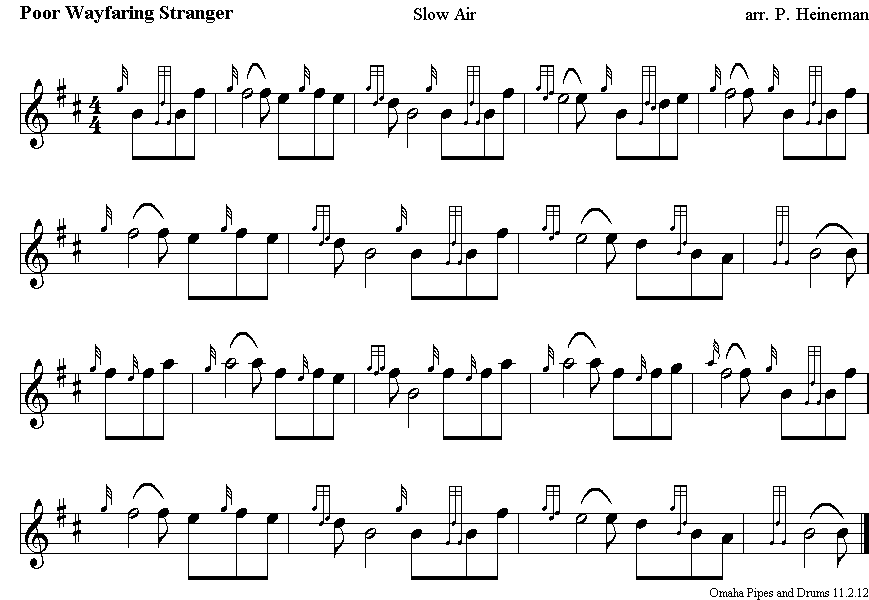| This Week’s Topic… | |||

Best viewed in
|
Time Signatures I was asked a few weeks ago the name of a particular tune I was playing, “Poor Wayfaring Stranger”; a tune I typically play into “Brian Boru.” The tune is a well-known American spiritual/folk song likely originating in the early 19th century about a plaintive soul on the journey through life. It became one of Burl Ives's signature songs, included on his 1944 album The Wayfaring Stranger. Ives used it as the title of his early 1940s CBS radio show and his 1948 autobiography. He became known as "The Wayfaring Stranger". Below and attached are the version I transcribed from a violin score. I tend to “bend” the “Es” as opposed to playing a doubleE as shown.
Then the question came up of why I wrote the tune in 4/4 and not 3/4. Well…the simple answer is that I was transposing it from 4/4 and that happens to be the most popular. However, it could also be written in 3/4. When I asked the question of Ian Macy at a composition workshop at Winter Storm a number of years ago of what time signature to use for different types of tunes, his response…”It depends.” He didn’t elaborate, but it was a wild party the night before. As you know, or should by now, the time signature (also known as meter signature) is a notational convention used in Western culture to specify how many beats are in each measure and which note value constitutes one beat. There are various types of time signatures, depending on whether the music follows simple rhythms or involves unusual shifting tempos, including: simple (such as 2/4, 3/4 or 4/4), compound (6/8, 9/8 or 12/8), complex (5/4 or 7/8), additive, fractional, irrational, and other meters. 4/4 or
Common time So, Ian was correct, “It depends.” It depends on a lot of things. Most of all, it is important to remember that music notation is a guide. It is a platform on which the musician adds expression.
|
||
